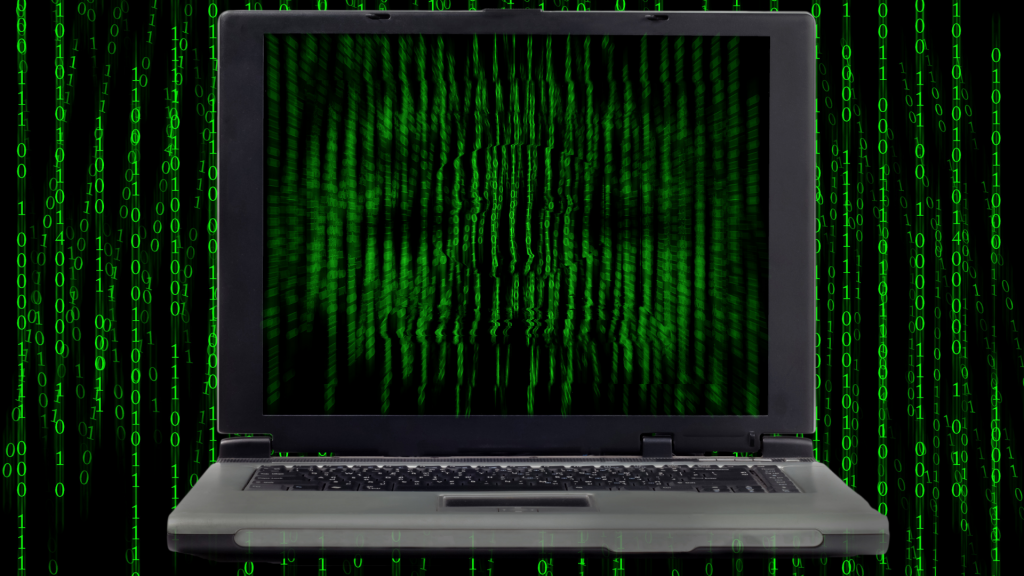Monitor ghosting is one of the most annoying things to happen when you are using your computer or tablet. It can make everything on your screen look like a blurry, distorted mess and it will follow along with whatever you’re doing!
Since the advent of LCD screens, monitor ghosting has been a problem for computer users. They can look like streaks or lines following behind moving objects, and sometimes they distort what you’re seeing on your screen.
Many people have researched ways to get rid of the ghosting effect and most importantly, how to eliminate it completely. If you’re a gamer or someone who uses their computer regularly for work, then ghosting can be an extremely frustrating problem.

What Causes Monitor Ghosting?
Monitor ghosting is caused by an issue with pixels that are improperly aligned in liquid crystal display (LCD) monitors as well as other flat-screen displays such as plasma televisions and LED TVs.
There have also been cases where it’s happened through just about any lighting condition your monitor faces while being used to watch something near a window during daylight hours.
The glare from outside causes light to be reflected off the inside surface of glass windows onto a device’s panel causing distortions across areas not directly penetrated by this “glare” making for poor image quality.
Monitor Ghosting Test
Ghosting is a very popular topic in today’s gaming world. To test your monitor screen ghosting, you can use online tools like Testufo.
Basically what this does is give the user an idea of how many frames per second they are getting while playing their favorite game and if there are any glitches or blips that might be interfering with gameplay.
An Easy Fix For Monitor Ghosting Issues
Ghosts on your monitor are a common and frustrating problem for many. This is the result of an incompatible refresh rate or response time, which will require you to first adjust these settings with your computer before fixing any other issues that may come up later down the line.
1. Checking Refresh Rate or Response Time
To avoid any troubleshooting, the first thing to do is check your monitor’s settings. Your monitor should be running at 60Hz or higher to ensure a fluid gaming experience.
To check your refresh rate on Windows 10 go to Settings >> System>> Display. You will find the Refresh Rate at Advanced Display Setting in Monitor Properties.
To change and increase your monitor refresh rate, go into Settings >> System >> Display. There you will find Advanced Display Setting under the “Display Adapter Properties.”
Click on Monitor to reveal a list of supported screen rates for your display. From there, toggle an option that is not automatically set as its current setting or desired value by clicking in its dropdown box; then click OK.
2. Enabling Overdrive Function
Screen ghosting can be fixed by enabling overdrive in your On-Screen Display menu. You can search for Overdrive or AMA or Trace Free of Response Time and then enable it if you need a little help with your monitor’s performance.
If enabled, play around with all of these settings while monitoring whether any differences are made to how clear the display looks on your computer.
3. Checking Setup of Monitor
There are settings that cause the screen to flash or ghost. Try disabling ULMB (Ultra Low Motion Blur) on your monitor and see if it fixes the problem.
You should also disable the Nvidia G-Sync or AMD FreeSync as some users have found that it causes monitor ghosting. If you’ve already disabled them, then try enabling them to see if they fix your issue.
4. Trying Overclocking your Laptop
If you’re looking for a way to increase the clarity of your monitor or laptop, overclocking it may be worth considering. This process increases the refresh rate and decreases response time which can eliminate ghosting altogether!
However, there are risks that come with this task — some displays have been known to become damaged from overclocking not being done properly. It’s best if an expert performs any type of overclocking in order to get optimum results without sacrificing quality!
5. Updating Drivers
Sometimes a driver update can fix something as simple and mundane as ghosting on your monitor. Check to see if there is an updated version of the software that might solve this problem before you spend any more time troubleshooting it or purchase another expensive display device.
Conclusion
Monitor ghosting an issue that can be caused by poor refresh rates and response times. By making sure your screen has a high refresh rate and response time you can avoid issues with image distortion or interruption as well as excessive blurring.
Ghosting is not a fault of the monitor, it’s just that you need to synchronize your game settings with the screen. This should give you a better playing experience and eliminate any worries about tracking other players on your screen.
